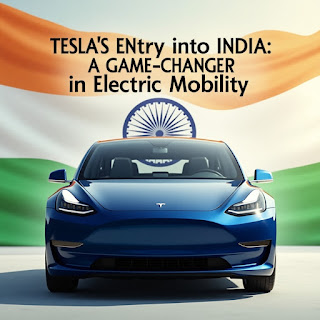Understanding the Tata Curve: A Journey of Innovation, Resilience, and Growth
Understanding the Tata Curve: A Journey of Innovation, Resilience, and Growth
The Genesis of the Tata Group: A Vision Beyond Boundaries
The roots of the Tata Group can be traced back to 1868, when Jamshed ji Tata, the visionary founder, established a small trading company that would eventually grow into one of the largest industrial empires in the world. Jamshedji’s vision was clear from the beginning: he wanted to build businesses that not only generated profits but also contributed to the betterment of society. From its very inception, the Tata Group's ethos was rooted in the values of integrity, quality, and social responsibility.
Jamshed ji Tata’s landmark projects, such as the foundation of Tata Steel (the first steel plant in India) and his push for higher education and research, laid the foundation for the company’s future. Tata Group's journey from these early beginnings to becoming a conglomerate with diverse business interests, from steel to software, automobiles to tea, is nothing short of spectacular.
The Tata Group’s growth over the decades has been akin to a curvv steadily climbing, sometimes with sharp turns, but always heading upwards. Tata Steel, established in 1907, was one of the first Indian companies to compete on a global scale. The company’s success in establishing a world-class steel production facility in Jamshedpur set the tone for other Tata companies to follow.
Over the years, the Tata Group diversified into various industries, and the curve of its growth extended into multiple sectors:
-
Tata Motors: Known for its cars, trucks, and buses, Tata Motors has evolved from making simple commercial vehicles to manufacturing cutting-edge electric vehicles, like the Nexon EV, which symbolizes the company’s push toward sustainability and eco-friendly transportation.
-
Tata Consultancy Services (TCS): TCS has grown into one of the world’s largest IT services companies, providing solutions for clients across multiple industries. TCS’s rise has mirrored the global demand for tech-driven solutions and has made the Tata Group a major player in the digital era.
-
Tata Chemicals: From producing industrial chemicals to becoming a leader in agricultural inputs and sustainable products, Tata Chemicals continues to evolve with environmental concerns at its core, reflecting the broader trend of sustainability in business practices.
-
Tata Global Beverages (TGB): Tata Group's venture into the global beverage market has seen remarkable success, especially with the acquisition of Tetley Tea, which helped it expand its reach internationally.
This diversification and continued expansion into new sectors have made the Tata Group one of the most resilient business conglomerates in India and globally, adapting to the shifting sands of the world economy and technology.
The Resilience of the Tata Curve: Overcoming Challenges
What truly sets Tata Group apart from many others is its ability to adapt and thrive despite numerous challenges. Whether navigating global economic recessions, shifting market dynamics, or technological disruptions, Tata has consistently come out on top.
For instance, the global financial crisis of 2008 presented a major challenge, yet Tata Group's timely acquisitions, such as Jaguar Land Rover, helped to bolster its position in the international market. Ratan Tata, who was at the helm of the group during this period, made bold decisions that not only saved Tata companies from downturns but also positioned them for future growth.
The Tata Curve is also defined by its long-term approach to business. The company does not just focus on short-term profits but places great emphasis on building sustainable value. Tata’s commitment to corporate social responsibility (CSR) and its philanthropic work, through organizations like the Tata Trusts, has further strengthened its reputation as a business that cares for its people and the planet.
The Future of the Tata Curve: Innovation and Sustainability
As the world continues to change rapidly, the Tata Group remains focused on leading the way in innovation. One of the latest chapters in Tata's history is the push toward electric mobility. Tata Motors has already made strides with electric vehicles like the Tata Nexon EV and the Tata Tiago EV, both of which offer consumers eco-friendly alternatives to traditional fuel-powered cars.
But the Tata Group’s commitment to innovation goes beyond just electric vehicles. With a focus on sustainable business practices, green energy, and digital transformation, Tata Group is positioning itself as a key player in the global transition to a greener, more tech-savvy world.
The Tata Curvv, an upcoming electric SUV from Tata Motors, is a prime example of how Tata is pushing the envelope on innovation. Designed with cutting-edge features and an emphasis on sustainability, the Tata Curvv promises to redefine electric mobility in India. With a sleek design and advanced tech, it could very well be the future of urban transportation, bringing Tata’s legacy of excellence into the electric age.
Conclusion: The Tata Curve Continues to Ascend
The Tata Curve is more than just a metaphor for growth; it’s a reflection of the Tata Group's core values of resilience, innovation, and social responsibility. Over the years, Tata Group has evolved from a small trading company to one of the most diversified and respected conglomerates in the world. Its remarkable journey continues to inspire entrepreneurs, business leaders, and consumers alike.
As Tata Group looks ahead, the next chapters of its story promise to be as dynamic and impactful as its past. Whether it’s revolutionizing the automobile industry, leading in technology, or contributing to sustainable practices, the Tata Curve will undoubtedly continue to rise, shaping the future for generations to come.





No comments: